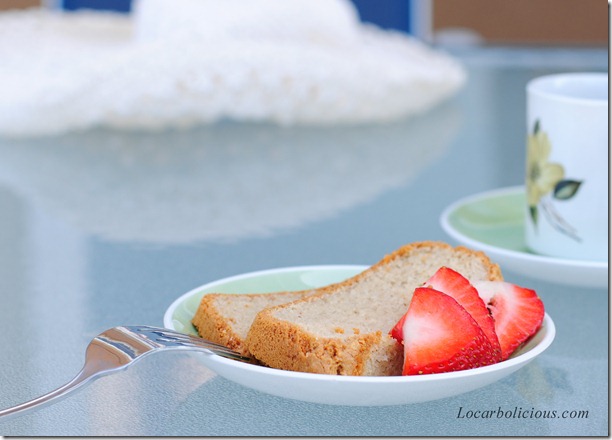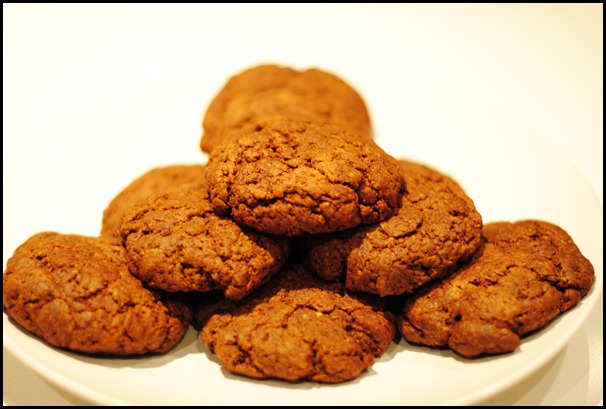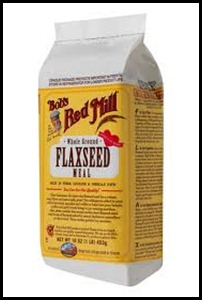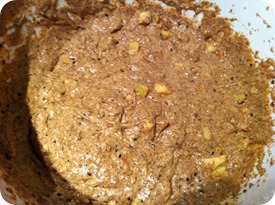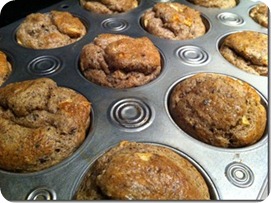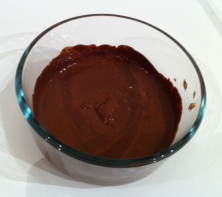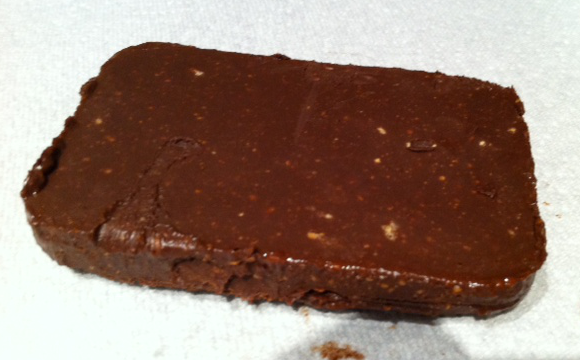Moved to AncestralChef.com
I have moved to blogging at AncestralChef.com.
Please follow me there for more delicious recipes!! If you haven’t seen my new FREE iPad e-book, then check it out on your iPad here. You can also reach me on Twitter, Facebook, Pinterest, or Google+.
I am also featured in the first issue of Paleo Living Magazine for iPad (full of videos, interactivity, and gorgeous pictures!), and you can download the first issue for FREE here.
Vanilla Pound Cake: Grain Free and Sugar Free
I absolutely love all of Carolyn’s creations on All Day I Dream About Food. She has some amazingly delicious recipes and some even more amazing photos of her creations! If you’re hungry for desserts, then you should definitely check out her site – it will make your mouth water.
When I told Carolyn that I was grain-free (gluten-free) and low-carb, she suggested trying her almond crusted butter cake. Her recipe uses almond extract and is sweetened using erythritol, a sugar alcohol, and stevia. You can find that recipe here. I modified her recipe so that it wouldn’t contain any sugar alcohols (I also made it vanilla flavored). Instead, I’ve sweetened it with liquid sucralose (which contains fewer carbs than Splenda but is essentially the liquid version of Splenda).
This was a huge hit at a recent dinner party with a bunch of non-low-carbers! The little bit of protein powder in the recipe makes the texture soft and smooth – just like regular cake! Enjoy with a good cup of tea in the afternoon.
| Vanilla Pound Cake Recipe |
- 3 cups almond meal/flour (I’ve made the recipe using Bob’s Red Mill Almond Meal/Flour, which you can buy here (the recipe uses up pretty much a 16oz bag) and using my home-made almond flour, which is made by food processing raw almonds to create a coarse almond flour)
- 1/3 cup vanilla flavored whey protein powder (I love this vanilla ice-cream flavored one)
- 1.5 teaspoons baking powder (see this post if you want to eliminate the carbs in baking powder)
- 1 teaspoon baking soda
- pinch of salt
- 1/2 cup of butter, softened (I use the microwave for this)
- 3 large eggs
- 1 tablespoon vanilla extract (sugar-free)
- 3/4 cup sugar equivalent of liquid sucralose or other sweetener (I buy it from splendex.net)
- 1/2 cup almond milk
- Preheat oven to 300F.
- Butter a loaf pan (9in by 5in).
- Mix all the dry ingredients together.
- In a large mixing bowl, beat the butter and add in the eggs, one at a time. Add the sucralose and vanilla. Then add in the dry ingredients mix, followed by the almond milk. Beat well.
- Pour the cake batter into the loaf pan and bake for 60 minutes (the cake will rise in the oven and the top should turn golden brown). Let the cake cool for a few minutes before flipping it out. Cut into slices when it’s completely cooled.
Baking Soda Vs. Baking Powder–Is There a Difference?
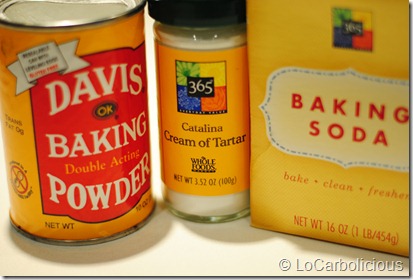 If you’ve ever baked normal (full of carbs) cookies, cakes, or breads, then you have probably used baking soda or baking powder. You might also have come across cream of tartar perhaps. These are all common ingredients that you can find in the baking section of most grocery stores. For a long time, I thought baking soda and baking powder were the same thing and could be used interchangeably. I don’t really know why I thought such a thing – but it does explain why I wasn’t particularly good at baking before!
If you’ve ever baked normal (full of carbs) cookies, cakes, or breads, then you have probably used baking soda or baking powder. You might also have come across cream of tartar perhaps. These are all common ingredients that you can find in the baking section of most grocery stores. For a long time, I thought baking soda and baking powder were the same thing and could be used interchangeably. I don’t really know why I thought such a thing – but it does explain why I wasn’t particularly good at baking before!
What is Baking Powder? This is usually a combination of baking soda with an acidic agent (such as cream of tartar, which is described below) along with some other ingredients, such as cornstarch. Baking powder produces carbon dioxide bubbles, which expand in the oven (due to the heat) so that your baked goods will rise and become light and soft. Baking powder can come in two versions: single-acting and double-acting. Single-acting means that as soon as you add the powder to anything wet, it’ll start giving off carbon dioxide bubbles, so you’ll need to put your mixture into the oven quickly to avoid running out of bubbles. Double-acting means that although some of the bubbles are released when you first add the powder to your mixture, most of the bubbles will come out when the mixture heats up in the oven. Therefore, you don’t have to worry about leaving your mixture out for too long when it comes to double-acting powder.
Why is Baking Powder Problematic on a Low Carb Diet? Many low carb diets discourage cornstarch or any other type of starch, but this is unfortunately an ingredient in most brands of baking powder. The starch doesn’t actually add much to the cooking, but it does stop the baking powder from getting moist and clumping together. So, while the baking powder states that it contains less than 1g of carb, you should remember that its serving size is 1/8 of a teaspoon and most recipes call for at least a teaspoon or more (there are 2g of carbs per teaspoon of baking powder). If you’re not super strict on your low carb diet, then a teaspoon of baking powder is not going to be a problem. However, if you’re really counting every carb, then you can make your own starch-free low carb baking powder by using cream of tartar and baking soda combined. A simple recipe for making baking powder is below, but first let me briefly explain what baking soda and cream of tartar are.
What is Baking Soda? It’s 100% sodium bicarbonate, which reacts with anything acidic in your baking mixture to produce carbon dioxide bubbles. These bubbles will start forming as soon as the baking soda touches the acidic ingredients, so you need to bake your mixture fast (otherwise, the bubbles will die out).
What is cream of tartar? This is a white powder (potassium hydrogen tartrate) that is an acidic salt. It’s occurs naturally as one of the by-products of wine-making. It has many uses in foods, the most well-known of which is stabilizing beaten egg whites. Other uses include giving icing and meringue a creamy texture (hence its name I assume) and reducing discoloration of vegetables when boiled. For low carb dieters, it has another use. When added to baking soda, it makes a carb-less baking powder that works just as well as normal baking powder! There have been some health concerns about cream of tartar. First, it is high in potassium, which can be problematic for people with kidney disease or taking medications that prevent the kidney from getting rid of the potassium effectively. When taken in large amounts, cream of tartar can also be a laxative. However, the amount used in normal cooking is generally not a problem.
Low Carb Cookies – Peanut/Almond Butter Cookies that Don’t Crumble!
Yes, delicious low carb cookies do exist, and you are looking at a photo of them!!
I tried making low carb cookies several months ago but gave up after finding them to be too crumbly. However, my interest was piqued again this past week when my cafeteria served flourless (gluten free) peanut butter cookies. They were a sell-out! But, making a flourless cookie was only half the battle – I still needed to get rid of the sugar in the cookies. I’ve described my trial and error process below, but you’ll love the ending (I did)….
Crumbly Cookie: I looked up a simple flourless peanut butter cookie recipe, which was really simple: mix together 1 egg with 1 cup peanut butter and 1 cup sugar, and then bake for 10 minutes at 375F. I tried the simple substitution of liquid sucralose for sugar. The cookies came out delicious but incredibly crumbly – in fact, I could barely get the cookie to my mouth before it disintegrated into powder. The cookies were vanishing into dust, and I wasn’t even eating them!
Substitute Splenda For Sugar: Next, I tried using Splenda. Although I’m not usually a big fan of Splenda (because of the bulking agents it adds), my cookies were in dire need of some sort of bulking agent! The cookies came out less crumbly, but were still very dry and all-too-eager to break into pieces.
Xanthan Gum? I took some serious action after that by adding in some xanthan gum (which is a thickening agent that’s great in soups like egg drop soup). This made the cookies more coherent, but it also gave it a chewy texture – reminiscent of Japanese mochi or rice balls (both which are generally made from glutinous rice flour).
Eureka: I soon (after quite a few more batches!) realized that perhaps eggs could act as the glue in this recipe. But I couldn’t just add more eggs in – it would make the recipe way too liquidy. I had to add something in with the eggs. That’s when it came to me…flax meal. The xanthan gum went out and the flax meal and extra eggs came into the mixture. The cookies came out more solid, with a texture rather like oatmeal! Success at last.
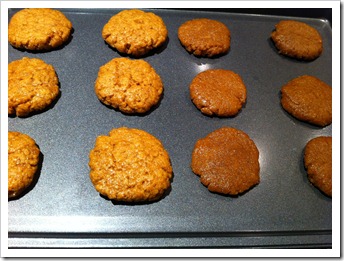 Making the Cookies Rise: Now that I had figured out how to make the cookies not crumble, I turned to the problem of making them rise. I wanted cookies that were lighter and less dense. Baking powder and baking soda are the common ingredients for making baked goods rise. To minimize usage of baking powder (because it contains a little bit of unnecessary carbs), I used cream of tartar instead. I’ll explain in my next post what all that means. Basically, I tried adding just baking soda (the cookies on the right), and then both baking soda and cream of tartar (on the left), and the cookies definitely rose more with both ingredients (even before putting it into the oven)! As you can see, cream of tartar also lightened the color of the cookie. (The photo shows the cookie dough prior to cooking.)
Making the Cookies Rise: Now that I had figured out how to make the cookies not crumble, I turned to the problem of making them rise. I wanted cookies that were lighter and less dense. Baking powder and baking soda are the common ingredients for making baked goods rise. To minimize usage of baking powder (because it contains a little bit of unnecessary carbs), I used cream of tartar instead. I’ll explain in my next post what all that means. Basically, I tried adding just baking soda (the cookies on the right), and then both baking soda and cream of tartar (on the left), and the cookies definitely rose more with both ingredients (even before putting it into the oven)! As you can see, cream of tartar also lightened the color of the cookie. (The photo shows the cookie dough prior to cooking.)
THE RECIPE
Ingredients (12 cookies):
-
1 cup peanut or almond butter (make sure it has no added sugar or salt or anything else!)
-
2 eggs
-
1 cup equivalent of Splenda
-
1/2 cup of flax meal
-
1/2 teaspoon baking soda
-
1 teaspoon cream of tartar
-
Optional: 2 tablespoons vanilla extract, 2 tablespoons of cinnamon, 1 teaspoon of nutmeg, 1/8 teaspoon of ground cloves (if you don’t really like the taste of nuts, then these will hide the nutty flavor well)
Directions:
-
Preheat oven to 375F.
-
Mix the dry ingredients (Splenda, flax meal, baking soda, and cream of tartar together).
-
Add the peanut/almond butter and the 2 eggs.
-
Shape into 1 and 1/2-inch balls and flatten into cookies.
-
Bake in oven for 8 minutes.
-
Leave to cool (they’ll harden a bit more upon cooling).
Note: the dough may look rather oily before you put it into the oven (and I think the cinnamon might draw some of the liquids out of the dough so that it looks like your dough is sitting in a puddle of water), but it comes out non-oily and moist on the inside!
Apple Cinnamon Muffins
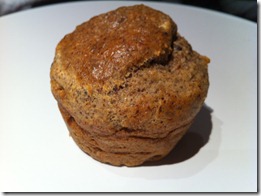 It would be wrong of me to go on about these delicious low carb muffins (gluten-free and grain-free) without giving you the recipe for them! So, it’s below… The muffins are 2g net carbs each and are really moist and full of flavors because of the spices and apple chunks in them. I keep them in the fridge and microwave one for 10 seconds on high to warm it up. They’re really convenient to take with you as breakfast or as a quick snack. You can try making them with other flavors, but I’ve generally found that apple and cinnamon go really well with artificial sweeteners (i.e. you can’t tell that it’s not real sugar!), whereas chocolate is really bad at hiding artificial sweeteners.
It would be wrong of me to go on about these delicious low carb muffins (gluten-free and grain-free) without giving you the recipe for them! So, it’s below… The muffins are 2g net carbs each and are really moist and full of flavors because of the spices and apple chunks in them. I keep them in the fridge and microwave one for 10 seconds on high to warm it up. They’re really convenient to take with you as breakfast or as a quick snack. You can try making them with other flavors, but I’ve generally found that apple and cinnamon go really well with artificial sweeteners (i.e. you can’t tell that it’s not real sugar!), whereas chocolate is really bad at hiding artificial sweeteners.
These muffins are flaxseed meal and almond meal based. You can either buy bags of flaxseed meal and almond meal (Wholefoods and a lot of larger grocery stores and health stores generally carry Bob’s Red Mill brand pictured below or you can buy it online at Amazon.com) or you can make your own by placing flaxseeds/almonds into a food processor or blender (the almonds can wear down the blade in your blender/food processor quickly). I generally make my own as it’s much cheaper to buy flaxseed and almonds unprocessed, but if you’re just starting to try low carb baking, then you might want to start with a small bag of flaxseed meal and of almond meal and see how you like the muffins before buying them in bulk. The other essential ingredient in low carb baking is coconut flour, and my next muffins post will on that!
Ingredients (makes 12 muffins)
- 1 cup of flax meal
- 1 cup of almond meal
- 1 tablespoon of black sesame seed (optional)
- 1 tablespoon of baking powder
- 1/4 teaspoon of salt
- 1 and 1/4 teaspoons of nutmeg
- 1 teaspoon of sugarfree vanilla extract
- 1 teaspoon of cinnamon
- 1 teaspoon of orange zest (optional)
- 1 cup equivalent of artificial sweetener
- 1/2 cup of butter, melted
- 4 eggs, beaten
- 1/3 cup of almond milk (can substitute water)
- 1 small apple, diced
Equipment: muffin/cupcake pan
Directions
- Preheat oven to 350F (175C).
- Grease muffin/cupcake pan with coconut oil or butter (ignore this step if you use muffin cups).
- Mix ingredients together and whisk well.
- Fill each muffin/cupcake cup to around 3/4 of the way.
- Bake for 20 minutes and cool before removing.
I’ve noticed that the muffins do shrink a bit once they cool, and they don’t look as fluffy as regular muffins, but they are deliciously moist even on reheating and much much healthier. In fact, I think these are better than many regular full carb muffins! Let me know what you think of the recipe and what variations you’ve tried.
Low Carb Ice Cream Part 1 – FAIL
Low carb desserts are definitely the weak link in the locarbolicious diet! And, unfortunately, my search for an edible low carb ice-cream has so far lead me nowhere. In fact, it’s really a disgrace to call the frozen foods that I’m going to describe below “ice-creams” because they bear so little resemblance in taste to them! If you don’t believe me, you’re welcome to go try them, but just remember that you’ve been warned! There’ll be a part 2 to this as I’ve got a few more ideas to try before giving up!
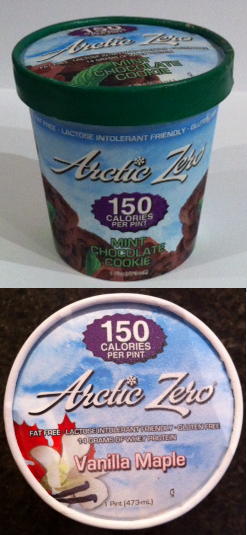 Arctic Zero: You know, they do such an amazing job of advertising their 150 calories per pint fake ice-cream, that I’ve actually been fooled twice into buying it! I somehow forgot just how awful it tasted after my first purchase (the mint chocolate cookie), and so when I saw it again in Wholefoods, I was fooled AGAIN (I bought the vanilla maple flavor that second time)! So, what is this Arctic Zero that’s able to fool me twice? It’s not ice-cream in any way (even though they call it an “ice-cream replacement”) – it has no milk or cream in the ingredients list. At best, it might be described as a bad sorbet perhaps. It’s true that their ingredients list looks pretty “natural,” but “natural” does not equal good tasting! On the contrary, their main ingredient is purified water (which, if you forgot, tastes like nothing). Their second most populous ingredient is whey protein concentrate, which also does not taste good (that’s why you have to flavor protein shakes so much!). Then comes a whole slew of sugars and flavorings, including organic cane sugar, chicory root, guar gum, xantham gum, natural flavors, sea salt, monk fruit concentrate. These are definitely not ingredients for the low carb purists! Ok, enough about the ingredients, the truth is I just care about whether it tastes good!
Arctic Zero: You know, they do such an amazing job of advertising their 150 calories per pint fake ice-cream, that I’ve actually been fooled twice into buying it! I somehow forgot just how awful it tasted after my first purchase (the mint chocolate cookie), and so when I saw it again in Wholefoods, I was fooled AGAIN (I bought the vanilla maple flavor that second time)! So, what is this Arctic Zero that’s able to fool me twice? It’s not ice-cream in any way (even though they call it an “ice-cream replacement”) – it has no milk or cream in the ingredients list. At best, it might be described as a bad sorbet perhaps. It’s true that their ingredients list looks pretty “natural,” but “natural” does not equal good tasting! On the contrary, their main ingredient is purified water (which, if you forgot, tastes like nothing). Their second most populous ingredient is whey protein concentrate, which also does not taste good (that’s why you have to flavor protein shakes so much!). Then comes a whole slew of sugars and flavorings, including organic cane sugar, chicory root, guar gum, xantham gum, natural flavors, sea salt, monk fruit concentrate. These are definitely not ingredients for the low carb purists! Ok, enough about the ingredients, the truth is I just care about whether it tastes good!
How does it taste? Because most of the pint is just frozen water, it doesn’t have the creaminess of ice-cream. Instead, it’s closer to ice, which presents a slight challenge when you’re trying to scoop it out. You could of course wait for it to melt a bit, but then it turns into a slushy frozen fudge-like consistency, which tastes even worse. I prefer the taste when this so called “ice-cream” is frozen because I can at least pretend that it’s just flavored ice or something! The mint flavor smells ok – mint + chocolate. The taste though, was just a watery mess. It was kind of minty and kind of maybe chocolatety and vaguely sweet. The vanilla maple was even worse – maybe vanilla and maple just doesn’t work well together, I don’t know, but all I can say was yuck!
 Bananas: You might have heard of this trick already, but after you put frozen bananas through the blender, they come out looking very much like creamy ice-cream. You can easily try this yourself by getting 2 bananas (you need enough bananas in the blender for it to have something to blend otherwise it doesn’t work) and chopping them up into half-inch chunks (as shown in the top picture). Place the chunks of bananas into the freezer overnight (it doesn’t work if the bananas are not well-frozen as I found out on my first attempt, which resulted in a disgusting gooey mess). Then place the frozen banana chunks into the blender and blend well for a few minutes – at first it looks like it’s just chopping the frozen bananas into smaller frozen chunks, but after a while, you’ll see the “ice-cream” form (see photo).
Bananas: You might have heard of this trick already, but after you put frozen bananas through the blender, they come out looking very much like creamy ice-cream. You can easily try this yourself by getting 2 bananas (you need enough bananas in the blender for it to have something to blend otherwise it doesn’t work) and chopping them up into half-inch chunks (as shown in the top picture). Place the chunks of bananas into the freezer overnight (it doesn’t work if the bananas are not well-frozen as I found out on my first attempt, which resulted in a disgusting gooey mess). Then place the frozen banana chunks into the blender and blend well for a few minutes – at first it looks like it’s just chopping the frozen bananas into smaller frozen chunks, but after a while, you’ll see the “ice-cream” form (see photo).
How does it taste? Like bananas (surprised?). It’s kind of creamy, but it’s not really creamy like full fat dairy ice-cream and it has a gooey texture when it melts in your mouth (not surprising since that’s the texture of banana puree). So maybe if you really like banana-flavored, not-so-creamy ice-cream, then this might work! Oh, and it’s not really low-carb since bananas have a lot of carbs. One medium sized banana (7″ to 7-7/8″ long) has 27g carbs (3g fibre and 14g sugar!). So, not a great choice!
Ok, don’t despair just yet as there are a few other options for low carb ice-creams out there. I’m going to try and get my hands on a tub of the Carbsmart Breyers Ice-cream (their website claims that Food Emporium carries one of the Carbsmart ice-creams). And then there’s also the trial and errors of home-made ice-cream. Part 2 coming soon… If you’ve tried a low carb ice-cream, please comment below to let me know what you thought of it.
Low Carb Breakfast – Coconut Pancakes

Low Carb Coconut Pancakes
I’m actually more of a fan of the French crepes (which I once heard an American call “creeps”) rather than the thick pancakes that you’re used to finding at brunch and in diners, but they start to taste super good when you can’t eat cake or any other desserts! I’m sure the low carb diet would never have taken off if the wonders of coconuts hadn’t been discovered. We drink the milk, make cookies from the flesh, and now make pancakes from the flour! And these pancakes sure seem popular with low-carbers! I found an abundance of different recipes, but I thought this recipe from nourishingdays.com was pretty easy and tasted super good! I made a batch of 10 pancakes and stored them in the fridge – delicious for breakfast!
Ingredients (makes 10 small pancakes):
- 4 eggs
- 1/2 cup coconut flour
- 1 cup coconut milk (from the cans, not the cartons – make sure it doesn’t have added sugar and it isn’t the “light” stuff. Also shake the can before opening as the cream and the water separates.)
- 2 teaspoons vanilla extract (make sure you buy a brand that has no added sugar)
- 3 drops of liquid sucralose or 1/2 teaspoon of Stevia
- 1 teaspoon baking soda
- 1/2 teaspoon (sea)salt
- coconut oil or butter for cooking
- Beat the eggs; add in the coconut flour, coconut milk, vanilla, baking soda, salt, and sucralose/stevia. Mix well.
- To cook these pancakes, you can use a griddle, or if you don’t have one like me, you can just use a frying pan. Put some coconut oil or butter to grease the pan and put the pan on a low heat.
- Ladle some of the batter into the pan (to form a 3 inch diameter circle). The pancake should be thick so don’t try to make the batter spread out. If you’re using a large enough frying pan, you can cook 3 or 4 pancakes at the same time.
- Cook for 2 minutes and then flip. Continue cooking and flipping until both sides are brown.
- The pancakes are a bit dry by themselves, so have it with some butter or coconut oil or else some fruit.
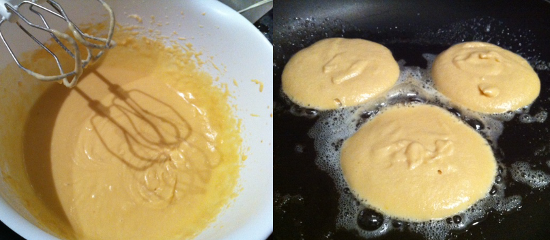
Low Carb Coconut Pancakes Batter in Mixing Bowl and in Frying Pan
Nutritional Information
For one pancake: Calories = 151 Fat = 11g Carbohydrate = 9g (5g fiber, 0.4g sugar) Protein = 4g
I CAN Believe It’s Not Sugar
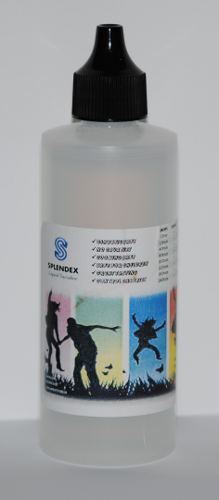
Liquid Sucralose
It’s probably a bit dramatic to say I pray everyday for my low carb desserts to taste like real desserts with real sugar, but that’s the general gist of how I feel. I’m filled with hope every time I smell those sweet aromas drifting out of my oven, and yet every time, I find that hope replaced with disappointment when I taste the dessert. I should really have realized long ago that artificial sugar will never taste like real sugar. Just try Coke Zero – no matter how much Coke advertises to the contrary, I can still taste that it’s just not real Coke! It’s as if mother nature made sure we would be punished for our gluttony. Is there any trace of hope then? Are low carb dieters doomed to consume only the first two courses of any prix fixe menu?
“artificial sugar will never taste like real sugar”
Well, not every dessert was an utter disaster. I think we have to live with the fact that it’s never going to be quite as good, but it can be close! I’ve been trying out pure liquid sucralose, which I bought from a very legit and US-based seller on Ebay, and I think it works ok in some desserts. So, the trick I’ve found is to make sure there’s something with a strong taste in your dessert that will cover up the fake sugar taste of the artificial sweetener. For example, I recently made a low-carb cheese cake. This turned out surprisingly well (especially considering I hardly ever bake and had never made cheesecake prior to that occasion!). The cheesecake recipe called for some lemon and vanilla, which covered up the sucralose taste quite well. I could still detect that it wasn’t real sugar – but if you don’t try to think too much, you could be mistaken… Cinnamon is another good masking agent. I made some sweet cinnamon crackers with liquid sucralose and flaxseed meal, which also turned out well.
“make sure there’s something with a strong taste in your dessert that will cover up the fake sugar taste of the artificial sweetener”
So what were the disasters? Chocolate. Chocolate and artificial sweeteners simply do not mix well together. Dark chocolate is naturally bitter, and you want the sweetener to balance out that bitterness, but all you end up tasting is a bitter taste with a sickly sweet twinge that makes you crumple your face in disgust. I even tried to make bacon truffles in the hope that the salty bacon taste would cover up some of that bitterness and drown out the fake sugar taste. I was wrong – even the coconut milk i tried adding to the concoction to mellow out the taste couldn’t save it. It was a treat fit only for the trash. I guess chocolate companies must have carried out those same cooking experiments, made the same crumpled faces, and thrown out the same batches of delicious looking but disgusting tasting chocolate. They then turned to alcohol sugars and made decent tasting chocolates, which aren’t good for you! What to do? I don’t have an amazing solution for this one, but I will keep wasting bars of perfectly good chocolate in my search! Here are a few options if you’re a chocolate-craving low carb dieter: 1) get used to eating really dark 85% chocolate, 2) treat yourself to a little bit of 75% or even 70% once in a while, or 3) try mixing a bit of alcohol, e.g. whiskey, and a tiny bit of sucralose into the melted chocolate to make alcoholic truffles (alcohol is the only thing I’ve found so far to cover up the sucralose taste sufficiently, but you have to really like the taste of alcohol!).
Next step: trying to see if adding a small amount of honey with liquid sucralose will create better tasting desserts.
Sweet Chocolate Praline
I cheated on my diet last Thursday – I just couldn’t keep it up any longer! I had scones, cake, cupcakes, pear cider, and donuts all in 6 hours! It was quite impressive, and I was actually amazed by how I didn’t feel too horrific the next day. But since Thursday, my sugar and cake cravings have definitely been awakened. I actually spent a night dreaming about eating two-bite brownies (you can get them at Costcos and Wholefoods as well as various other stores). I remember just eating them one after another, two bites per brownie! This has spurred me to make more chocolate, and this time, sweeter chocolate. So, here’s a quick and simple modification to the chocolate almond dessert recipe: switch one piece of the Baker’s unsweetened baking chocolate for a piece of the same size of 75% chocolate or just use 85% chocolate for the whole thing. Watch this space for my next chocolate modification…the addition of Splenda. Some dieters discourage it still, but the health effects appear to be very minimal – read my post about artificial sweeteners for more info.
Chocolate Almond Dessert
I hate prix fixe menus now because it forces me to get a dessert course that I can’t eat! I’m usually forced to eat a few berries while watching everyone else at the table gorge themselves on chocolate fondant or strawberry cheesecake, or some other tempting dessert. I miss desserts. Sigh!
I’ve searched through many of the low carb dessert recipes out there (and I try lots of the pre-made low carb desserts too), but it just seems wrong to replace sugar with Splenda or some other fake substance. (Fake sugars have similar insulin effects as eating real sugar, so it really shouldn’t be part of a low carb diet – I know, there’s disagreement there!) Anyway, my solution is the chocolate almond dessert (yummy and low carb!)
What you will need:
- 2 tablespoons of almond butter (other nut butters are good too like peanut butter, although some diets won’t allow peanuts). I get fresh almond butter from wholefoods,ama
- 2 pieces (56g) of Baker’s unsweetened baking chocolate (or some similar unsweetened dark chocolate above 75%). There is 8g of net carbs in the 2 pieces of Baker’s.
- 1 teaspoon of coconut oil (optional).
Cooking instructions:
- Place the almond butter and the chocolate together in a microwavable bowl and place on the high setting for 1 minute or until the chocolate melts.
- Stir the mixture until the almond butter and melted chocolate are evenly distributed.
- Using a piece of kitchen towel, spread the coconut oil on all the sides of the container that you want your chocolate to be molded into – this can be a bowl, the bottom of a glass, or just a piece of tin foil. I went for a tin that I had lying around, but the bottom of a glass for a round piece of chocolate would work well too!
- Spoon the chocolate almond butter mixture into your oiled contained and place into the refrigerator for 2 hours.
- Take the chocolate bar out of the container – you might need to use a knife to scrape around the edges for it to pop out. And there you have it – a praline-like bar of soft delicious dessert. If you want more nuts, you can also add chopped up hazelnuts (or other nuts) on top of the chocolate bar after it has been in the fridge for about 10 minutes. You can also cut the bar into strips and put onto low carb ice-cream from an even for better dessert!
